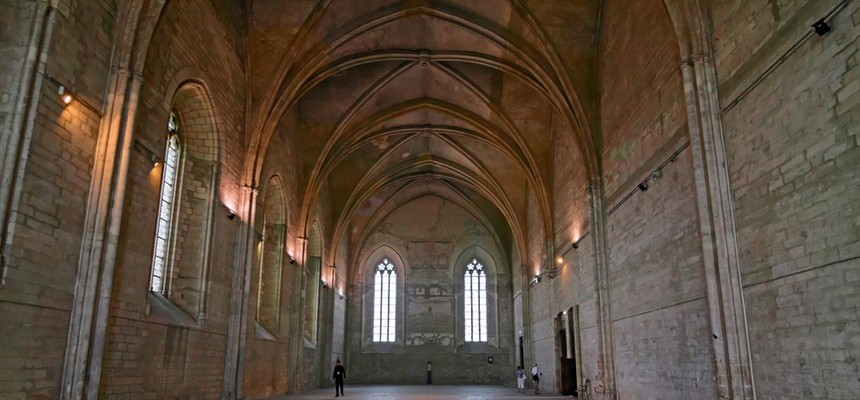
Although Pope John XV is spoken of as having a pontificate marked by greed and nepotism, there is little in the way of facts to support it. The same can not be said of the Roman dictator. John certainly had to be careful of whatever he did, since he was succeeding two popes who were murdered. He had to watch himself as Crescentius II, the current dictator, was the son of Crescentius I, who is seen as having arranged the recent murders of other popes.
John was the son of the Roman presbyter, Leo, born possibly as late as 950. He was a learned man and a writer. Before he rose to the Chair of Peter, he was the cardinal-priest at the Church of St. Vitalis. Having lived his life in Rome, he was all too aware of the politics of the city. The turmoil rarely stopped.
After the death of Pope John XIV, the Crescentii family called back from Constantinople Boniface, the anti-pope. He died, suddenly, in July 985. This death was a political setback for the Crescentii. Possibly to save face, or at least save the family good fortune, Crescentius II successfully got John elected. He was crowned some time between 6 August and 5 September, 985.
Crescentius II was the dictator of Rome and John had no temporal powers. The dictator seems to have been a micro-manager, driving John to distraction with demands. He would not allow John access to him without payment of bribes. John had to turn to Empress Theophano, the widow of Otto II and mother and regent to Otto III, several times.
Pope John is most well known for solemnly canonizing Bishop Saint Ulrich of Augsburg in January of 993. No other saint had been officially canonized before.
Although John had little temporal power in Italy, he was turned to for help with temporal problems by those in other countries. He helped mediate the quarrel of the young King Aethelred of England with Richard of Normandy. The papal legate, Leo of Trevi, announced the Peace of Rouen in a papal bull dated March 991.
The longest problem he had rolled over into the next generation, becoming known as the Investiture Controversy. This started out with a fight over the archbishopric of Rheims. A distant relative of Charlemagne, Hugh Capet usurped the Carolingian dynasty in 987. The next year, he nominated Arnulf, nephew of Charles of Lorraine, as archbishop of Rheims. Shortly after, Charles invaded France with the intention of overthrowing Capet and installing himself of the throne. He seized Rheims. Capet assumed that Arnulf was more loyal to family than to king and asked Pope John to depose the archbishop. Before the pope could respond, the French army took back Rheims, chased off Charles’ army and took Charles and Arnulf into custody. Hugh held a synod to depose Arnulf and elect his friend, Gerbert, as the new archbishop. Competing synods and anti-papal rhetoric succeeded, with Capet preventing the French bishops from attending. It took much wrangling on the part of the papal legate to settle this argument, which had blown so large. The year was 995 before all was settled.
The next year, the sixteen-year old Otto III decided to go to Rome for his imperial coronation. Arriving in Pavia, he decided to stay for Easter, not chancing missing the celebrations on his way to Rome. He left 12 April. Unfortunately, Pope John died on 1 April, of a fever. The young emperor decided to elevate his cousin, Bruno, to the papacy as Gregory V. Within months, 23 October, Hugh Capet died. The archbishop, Arnulf, had remained in prison all this time. He was released and returned to his see at Rheims. Gerbert moved to Germany to be an advisor to the young Otto III. He would eventually become Pope Sylvester II, the first French pope. The one who fared the worst was Charles of Lorraine. He died in prison, where he lived for years with his wife and their children, who were born there. The children were let free.

Recent Comments